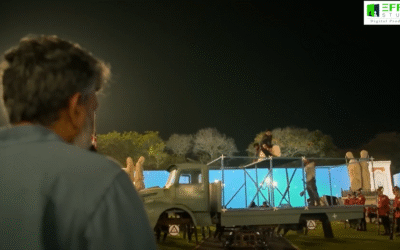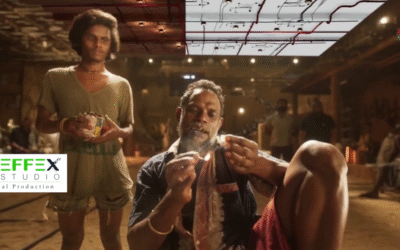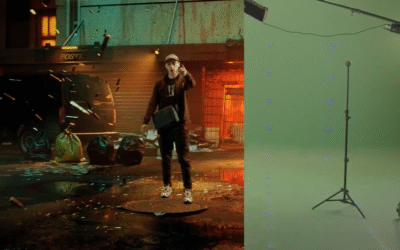Background
Bengali cinema, deeply rooted in realism, literature, and social themes, has carved its identity through nuanced storytelling. Unlike mass-market productions, Bengali films focus on emotional resonance, symbolic visuals, and rich character arcs. A Kolkata-based indie film studio recently undertook a feature film that included six core scene types: a nostalgic song, a grounded fight, a tragic accident, a family-centered dialogue scene, a slice-of-life comedy, and a courtroom climax. Each required post-production choices that favored restraint, texture, and cultural accuracy — highlighting the growing value of movie post production services across regional industries.
Project Overview
The film narrated the life of a school librarian uncovering truths about his family history. It intertwined memory, reality, and politics. Shot on Sony FX6 with natural light and vintage lenses, the raw footage had warm tones and slow movements. The editing was done using Final Cut Pro, while audio mixing was completed in Logic Pro X. DaVinci Resolve handled the grading process — showcasing how even independent film post production companies use high-end tools to shape cinematic tone.
The song scene, placed early in the film, featured a boat ride across the Hooghly River at dusk. The fight scene occurred in a narrow bookstore alley. The accident scene depicted a bicycle crash involving a young child. The dialogue scene showed a confrontation over inheritance. The comedy scene revolved around quirky library visitors, and the climax featured a community hearing in a town hall — each demanding customized treatment from a skilled post production studio.
Key Challenges and Solutions
The song scene was disrupted by overcast skies during the shoot, leading to inconsistent lighting. In post, selective luminance masks and soft glow overlays helped maintain golden-hour warmth. A subtle flute score was added to blend with river sounds, preserving the nostalgic tone without being overly dramatic — a decision common in culturally sensitive video post production services.
The fight scene, although brief, was complex due to spatial limitations. The editor leaned into the chaos, using jump cuts and blurred transitions. Sound design emphasized physical grunts, scraping bookshelves, and the clatter of falling books—recorded separately and layered for impact. These choices underline the subtlety and sharp timing required in the post production process in filmmaking, even for short action bursts.
In the accident scene, the child’s fall was shot in slow motion but lacked emotional clarity. The team inserted a heartbeat audio layer that faded into silence upon impact. Motion blur and color desaturation were applied to symbolize trauma. A hand-drawn animation frame of the bike wheel spinning was composited in briefly to convey memory distortion — a creative use of movie editing and VFX services to communicate psychological disorientation.
The drama/dialogue scene required pacing and mood management. It was edited with long static shots to let the emotional weight breathe. Natural reverb from room acoustics was preserved during sound mixing, with ambient fan noise adding tension to pauses between lines — demonstrating the artistic side of film editing and post production where rhythm and tone matter as much as visuals.
For the comedy segment, the raw timing felt off. In post, reaction shots were repositioned, and awkward pauses were replaced with short zoom-ins. A background score using harmonium and tabla loops enhanced the cultural familiarity. Characters’ footsteps and chair squeaks were exaggerated subtly for light humor — exemplifying how video post production services enhance simple scenes with precise audio layering.
The climax scene featured overlapping arguments in a crowded room. Audio layers were carefully separated and panned to mimic real-life auditory focus. The final reveal was supported by dimming background noise and focusing on one speaker’s voice. Color tones moved from neutral to warmer hues as emotional resolution unfolded — a carefully measured result from a deeply experienced post production studio.
Outcomes and Impact
The film gained critical appreciation at regional festivals and on streaming platforms. Viewers praised its atmospheric storytelling and seamless transitions between genres. The movie post production services behind it were recognized for evoking nostalgia, intensity, and realism without over-reliance on special effects.
The song scene became a local favorite on music streaming platforms. Editors were invited to speak at Satyajit Ray Film Institute about their techniques for emotional pacing. The accident and dialogue scenes were cited in reviews as standout moments for subtle sound and visual design — showcasing how film post production companies can amplify emotional storytelling through invisible craftsmanship.
Learnings and Best Practices
- Natural ambience often trumps dramatic scores in Bengali cinema.
- Pacing in emotional scenes is best supported by static framing and room tone.
- Handcrafted visual elements (like sketches or overlays) can strengthen memory-driven narratives.
- Cultural instruments in background music enhance relatability.
- Fight and comedy sequences benefit from tightly layered sound, even when visually minimal.
- Color grading should reflect emotional shifts rather than stylization.
Conclusion
In Bengali cinema, film editing and post production act as invisible artists. From crafting poetic moments on a river to escalating tensions in a town hall, each scene type benefits from careful audio-visual layering and culturally resonant choices. This case study affirms that technical finesse in post must serve storytelling above all — especially in a film culture built on depth, realism, and authenticity.



